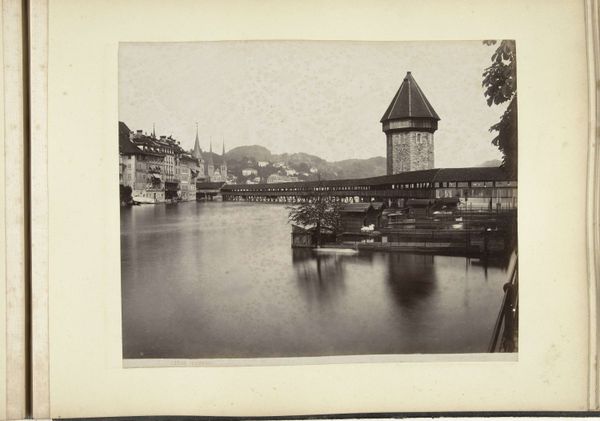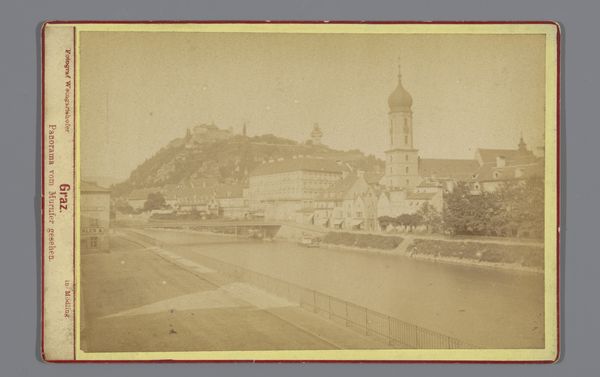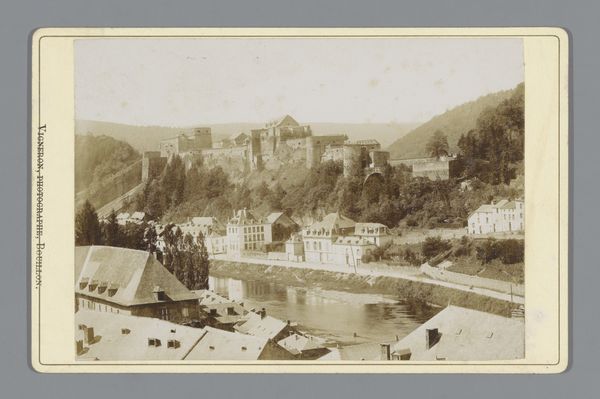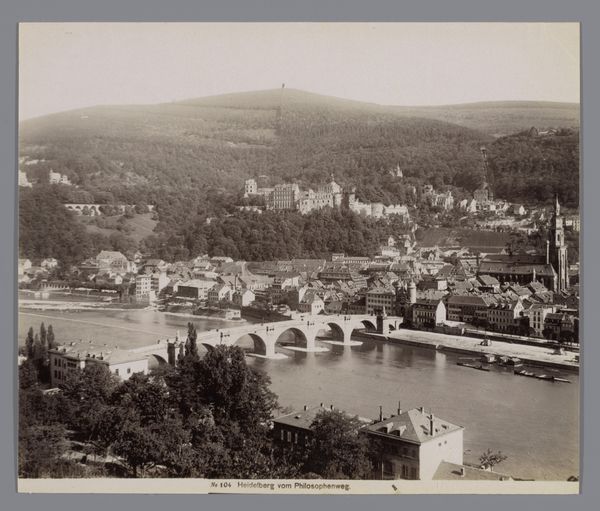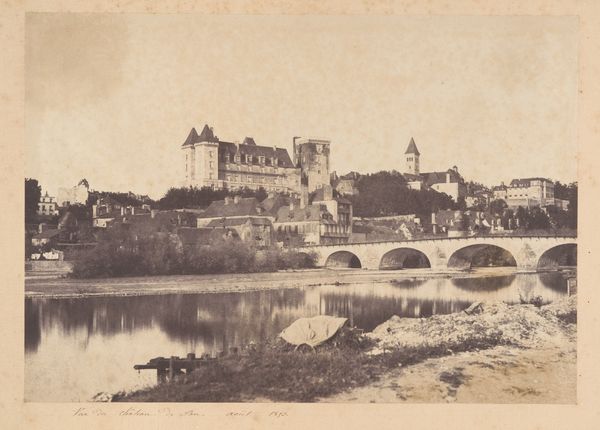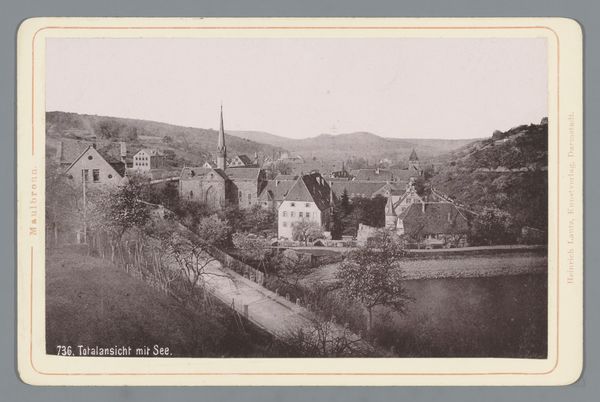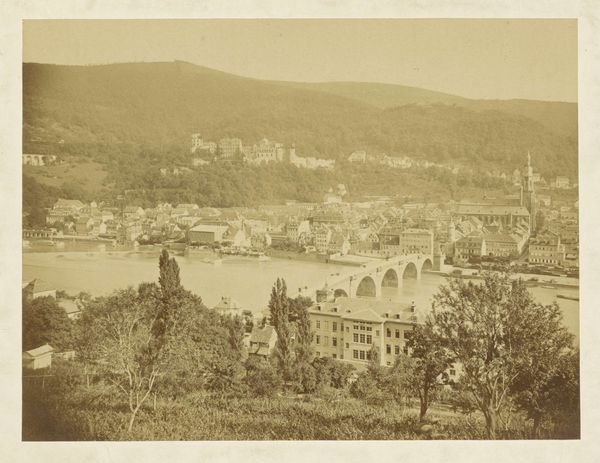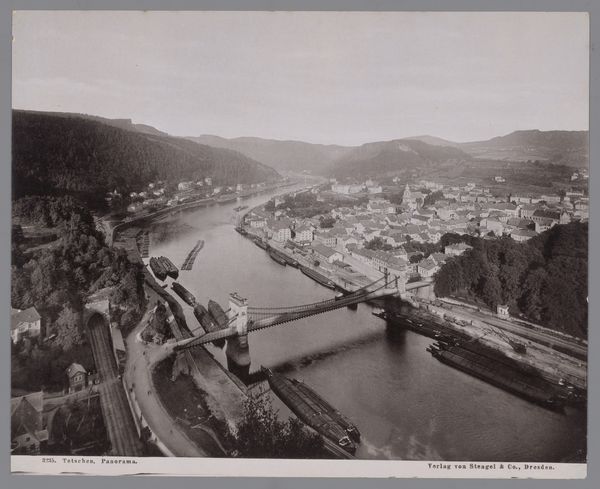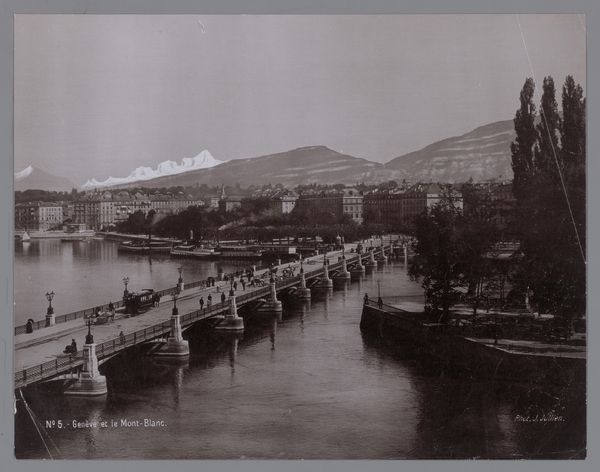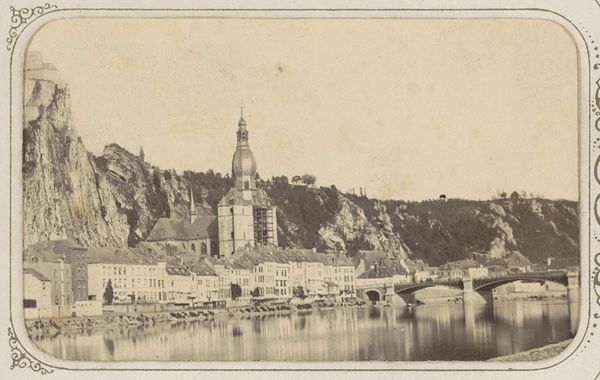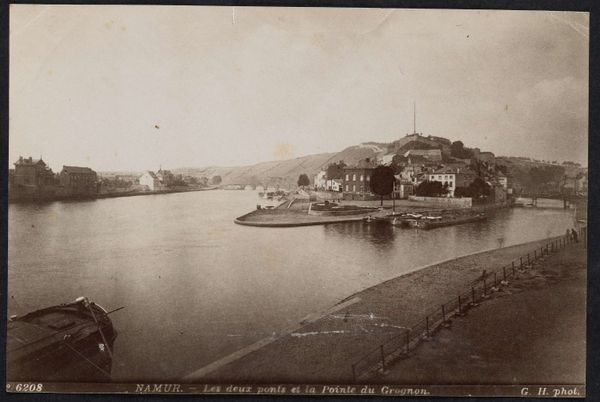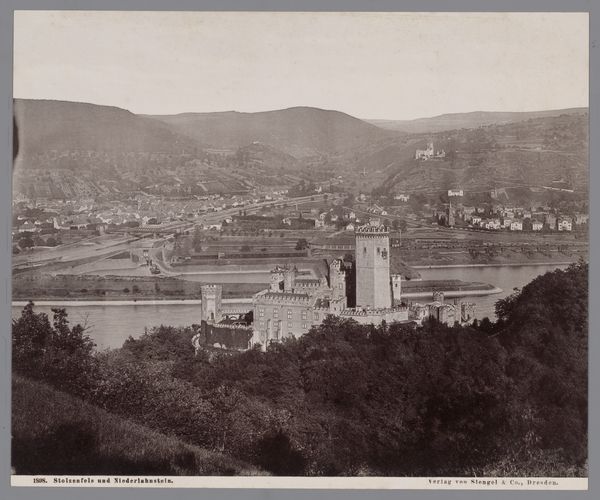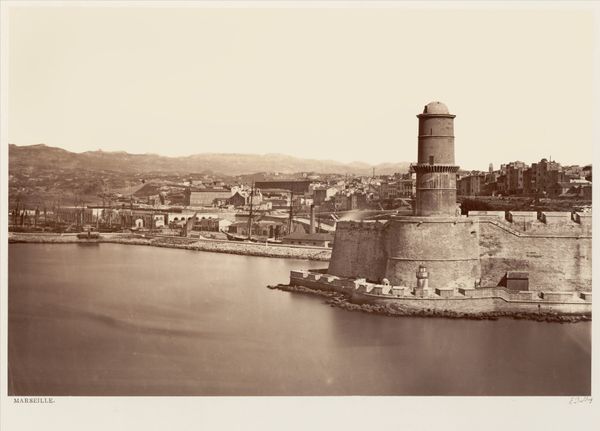
photography
#
pictorialism
#
landscape
#
photography
#
cityscape
Dimensions: height 212 mm, width 265 mm
Copyright: Rijks Museum: Open Domain
Curator: Welcome. We are looking at a photograph from sometime between 1895 and 1930 titled "Kapelbrug in Luzern, links in de verte het Château Gütsch". It resides here at the Rijksmuseum and its authorship is currently listed as anonymous. Editor: The mood is calm. Almost nostalgic. The tones are muted and softened in a way that pulls you into another time. It reminds me of flipping through old family photo albums and finding a mysterious snapshot. Curator: Yes, the atmospheric quality stems from its adherence to Pictorialism, which valued soft focus and painterly effects. The choice to render this cityscape as an artistic photograph involved specific material and labor practices of the era. Think about the photographer’s selection of the camera, the lens, the photographic paper, and the darkroom techniques employed. These were all carefully controlled to create a specific aesthetic outcome. Editor: You're right, you can sense the photographer manipulating the light to create almost dreamlike shadows in the water. The bridge seems like a phantom of what it once was... What kind of emotional or cultural work do you think that the artist sought with that choice? Curator: Perhaps they aimed to evoke a sense of historical distance. They capture not just a scene but the sensation of observing a place shaped by industrial advancements in tourism, materials, transportation. Editor: That resonates! I feel like I’m not just observing Lucerne; I'm feeling its historical presence, and also observing its transformation into an experience to be consumed. It’s like this single photo contains countless layers of place and memory. Curator: Precisely. Examining this photo prompts us to consider not only its aesthetic properties, but the ways in which materials, labor and technologies mediated our engagement with the depicted location. Editor: Thinking about the relationship between the image's mood, history and manufacture offers many more ideas than considering each in isolation. Thanks for showing me a new angle on this piece! Curator: Likewise! It's a fitting encapsulation of how photographic techniques became both an art form and a historical record.
Comments
No comments
Be the first to comment and join the conversation on the ultimate creative platform.
